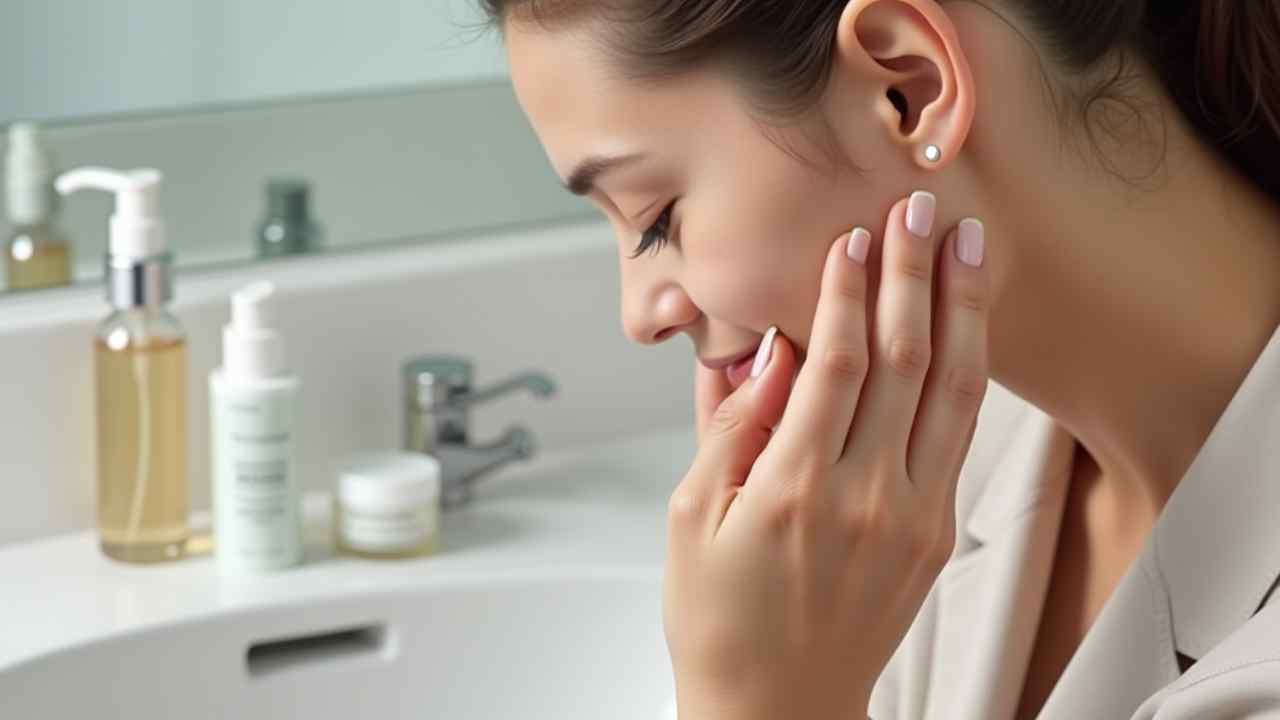
✨ How to Reduce Irritation During Skin Purging: A Survival Guide
✨ How to Reduce Irritation During Skin Purging (A Survival Guide) ✨
It is a frustrating skincare experience. You start a new, promising product with an active ingredient. You are excited for the results. But instead of getting better, your skin suddenly gets worse. This is likely "skin purging."
Skin purging is a temporary reaction. It is caused by ingredients that speed up skin cell turnover. This includes retinoids and exfoliating acids. These ingredients push underlying clogs to the surface all at once. The good news is, you can manage it.
This guide will explain how to reduce irritation during skin purging. We will also help you tell the difference between purging and a bad breakout. Let's get you through this phase to the glowing skin on the other side. ✅
🤔 Is It Purging or Just a Bad Breakout?
This is the most important question to answer first. Purging is a temporary phase that you should push through. A bad reaction means you should stop using the product immediately. Here is how to tell the difference.
Purging happens where you normally get breakouts. The pimples tend to be smaller and come to a head faster than usual. They also clear up more quickly than a typical pimple. It is a sign that the product is working.
A bad reaction or regular breakout can happen in new areas. The pimples might be red, inflamed, or cystic. You may also experience a rash or itching. If this happens, your skin does not like the product. You should stop using it.
💡 How Can You Introduce Active Ingredients Slowly?
The best way to reduce irritation during skin purging is to start slow. Do not shock your skin by using a powerful new product every night. A gradual introduction gives your skin time to adapt. This minimizes the intensity of the purge.
Start by using the new active ingredient only one to two times per week. Do this for the first few weeks. If your skin is handling it well, you can increase to three times per week. This "low and slow" approach is always the safest.
🛡️ What Does a "Barrier-Support" Skincare Routine Look Like?
When your skin is purging, it is in a sensitive state. Your goal should be to treat it as gently as possible. This means simplifying your routine. Focus only on products that soothe, hydrate, and protect your skin's barrier.
1. Use a Gentle Cleanser: Switch to a simple, hydrating, and fragrance-free cleanser. Avoid any harsh scrubs or foaming washes that can strip the skin.
2. Focus on Hydration: Use a simple hydrating serum. Look for ingredients like hyaluronic acid or glycerin. These help to pull moisture into the skin.
3. Moisturize Well: A good moisturizer is non-negotiable. Look for ingredients like ceramides and niacinamide. These help to repair and support your skin's protective barrier. 💧
🥪 Can You Use the "Buffering" or "Sandwich" Method?
Yes, this is a fantastic technique, especially for retinoids. It is a simple trick for how to reduce irritation during skin purging. It is perfect for beginners or those with dry, sensitive skin.
The "buffering" method means applying your moisturizer before your active ingredient. The moisturizer acts as a protective buffer. It slows down the absorption of the active ingredient. This makes it much less likely to cause irritation.
For extra protection, you can try the "sandwich" method. You apply a layer of moisturizer, then your retinol, then another layer of moisturizer on top. It is a gentle but effective way to get the benefits without the side effects.
🚫 What Should You Absolutely Avoid During a Purge?
While your skin is purging, there are a few things you must avoid. These can make the irritation worse and damage your skin. Be very gentle during this temporary phase.
- Do Not Pick or Squeeze: This is the number one rule. Picking at the purge will lead to inflammation and scarring.
- Do Not Use Other Exfoliants: Do not use any other scrubs, acids, or harsh tools while your skin is adapting.
- Do Not Skip Sunscreen: Active ingredients make your skin more sensitive to the sun. You must wear a broad-spectrum SPF 30 or higher every single day. ☀️